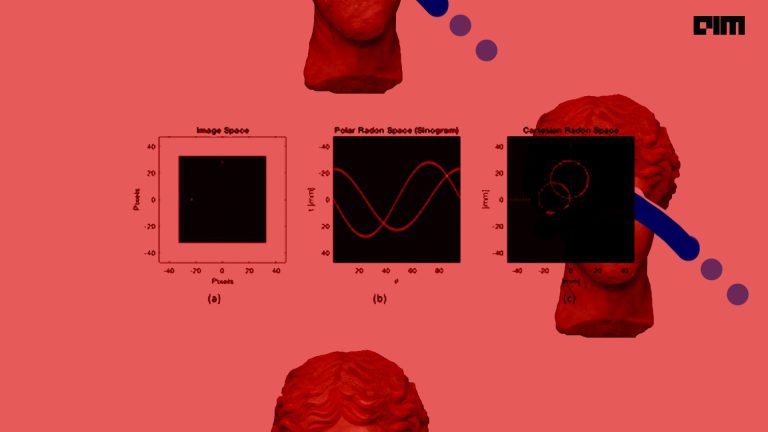For a few years now, Generative Adversarial Networks, or GANs, have been successfully used for high-fidelity natural image synthesis, data augmentation and more. From creating photo-realistic talking head models to images uncannily resembling human faces, GANs have made huge strides of late.
Below, we have curated a list of the top 10 tools for Generative Adversarial Network (GAN).
(The list is in alphabetical order)
1| GAN Lab
About: GAN Lab is an interactive, visual experimentation tool for Generative Adversarial Networks. With this tool, you can interactively train GAN models for 2D data distributions as well as visualise their inner-workings. For implementation, GAN Lab uses TensorFlow.js, an in-browser GPU-accelerated deep learning library. GAN Lab’s visualisation powers can be used to learn how the generator of a model incrementally updates to improve itself to issue fake samples that are increasingly more realistic. Some of its features are:
- Interactive hyperparameter adjustment
- User-defined data distribution
- Slow-motion mode
- Manual step-by-step execution
Know more here.
2| HyperGAN
About: HyperGAN is a composable GAN framework that includes API and user interface. HyperGAN builds generative adversarial networks in PyTorch and makes them easy to train and share. HyperGAN is meant to support custom research as well. With this framework, one can easily replace any part of the GAN with the json file, or just create a new GAN altogether. At present, HyperGAN is in pre-release and open beta phase.
Know more here.
3| Imaginaire
About: Created by NVIDIA, Imaginaire is a PyTorch-based Generative Adversarial Network (GAN) library that integrates all the optimised implementations of multiple images and video synthesis projects developed by Nvidia into one. It is a multi-purpose library with a number of functionality, from image processing to video translation and generative style transfer. Released under the Nvidia software license, Imaginaire contains six algorithms that support image to image translation: pix2pixHD, SPADE, FUNIT, UNIT, MUNIT and COCO-FUNIT.
Know more here.
4| GAN toolkit
About: The GAN toolkit by IBM uses an extremely flexible, no-code approach to implement the popular GAN models. By providing the details of a Generative Adversarial Network model as command line arguments or in an intuitive config file, the code could be easily generated for training the GAN model. Some of the advantages of the GAN toolkit are:
- Highly modularised representation of GAN model for easy mix-and-match of components across architectures.
- Provides an abstract representation of GAN architecture to provide multi-library support.
- Coding free way of designing GAN models.
Know more here.
5| Mimicry
About: Mimicry is a popular and lightweight library in PyTorch aimed towards the reproducibility of GAN research. Mimicry provides TensorBoard support for randomly generated images for checking diversity, loss and probability curves for monitoring GAN training. Some of its features are:
- Standardised the implementations of GAN models that closely reproduce reported scores.
- Baseline scores of GANs trained and evaluated under the same conditions.
- A framework to focus on implementation of GANs without rewriting most of GAN training code.
Know more here.
6| Pygan
About: Pygan is a popular library written in Python. The library is used to implement models like Generative Adversarial Networks (GANs), Adversarial Auto-Encoders (AAEs), Conditional GANs as well as Energy-based Generative Adversarial Network (EBGAN). The library makes it possible to design the generative models based on the Statistical machine learning problems in relation to GANs, Conditional GANs, AAEs and EBGAN to practice algorithm design for semi-supervised learning.
Know more here.
7| StudioGAN
About: StudioGAN is a popular library in PyTorch for implementing representative Generative Adversarial Networks (GANs) for conditional as well as unconditional image generation. The library includes several interesting features, such as:
- Extensive GAN implementations for PyTorch.
- Better performance and lower memory consumption than original implementations.
- Comprehensive benchmark of GANs using CIFAR10, Tiny ImageNet, and ImageNet datasets.
Know more here.
8| Torch-GAN
About: TorchGAN is a popular Pytorch based framework, used for designing and developing Generative Adversarial Networks. This framework has been specifically designed to provide building blocks for popular GANs. It also allows customisation for cutting edge research.
This framework has a number of features, such as:
- Allows to try out popular GAN models on your dataset.
- Allows to plug in your new Loss Function, new Architecture, etc. with the traditional ones.
- Helps in seamlessly visualising the training with a variety of logging backends.
Know more here.
9| TF-GAN
About: TensorFlow-GAN (TF-GAN) is a lightweight library for training as well as evaluating Generative Adversarial Networks (GANs). It provides simple function calls which can cover the majority of GAN use-cases to get a model up and running in just a few lines of code.The structure of this library is composed of several parts including the core, common GAN operations and normalisation techniques, losses and penalties, among others.
Know more here.
10| VeGANs
About: VeGANs is a Python library with various existing GANs in PyTorch. More specifically, the library can easily train various existing GANs in PyTorch. The library is meant for users who want to use existing GAN training techniques with their own generators/discriminators. The user provides discriminator and generator networks, and the library takes care of training them in a selected GAN setting.
Know more here.



















































































